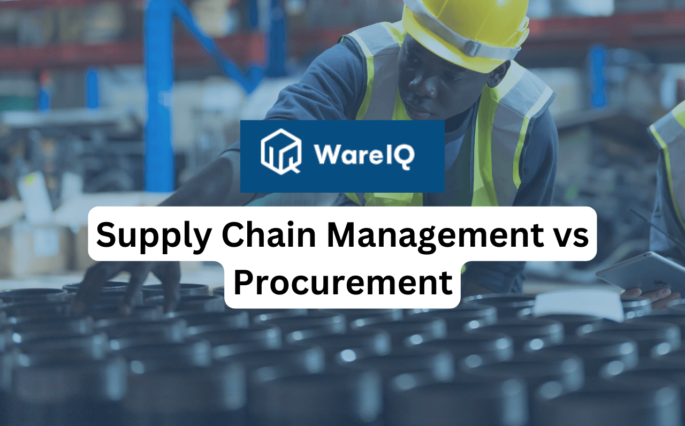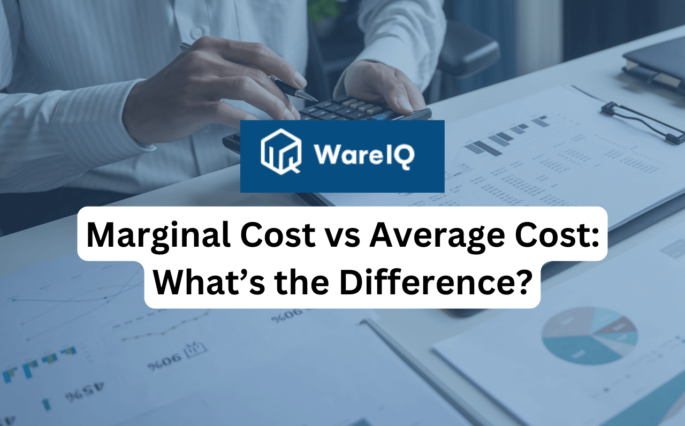The Essence of Wear and Tear: Definition, Examples, and Importance


Wear and tear are inevitable aspects of the lifecycle of physical assets, especially within the supply chain, logistics, storage, and warehouse industry. It reveals that understanding wear and tear is not merely about acknowledging the depreciation of goods and equipment over time; it’s about grasping the implications of this natural process on operational efficiency, asset management, and the long-term sustainability of business operations.
This article aims to dissect the essence of wear and tear, offering insights into its definition, practical examples from the industry, and its undeniable importance in the strategic planning and execution of logistics operations. Recognising the impacts of wear and tear is pivotal for professionals in the field, as it influences decision-making related to maintenance, investment in durable goods, and the optimisation of warehousing practices to mitigate its effects.
- What Is the Meaning of Wear and Tear?
- What Are the Examples of Wear and Tear?
- Why Is Wear and Tear Important?
- Conclusion
- Frequently Asked Questions About Wear and Tear
- How often should equipment be inspected for wear and tear?
- Can regular maintenance completely prevent wear and tear?
- Is wear and tear the same as depreciation?
- How does environmental exposure contribute to wear and tear?
- What strategies can businesses implement to mitigate wear and tear?
- What role does employee training play in managing wear and tear?
What Is the Meaning of Wear and Tear?
The meaning of wear and tear transcends its straightforward definition of the gradual degradation of objects through use and environmental exposure. It embodies the natural and inevitable process of ageing and deterioration that every physical asset undergoes over time. In the supply chain, logistics, storage, and warehouse industry, it signify a critical operational and financial consideration, as it directly impacts the efficiency, safety, and cost-effectiveness of operations.
Understanding wear and tear involves recognising that it is an inherent aspect of physical assets’ lifecycle, factoring into the depreciation of equipment and inventory value. It’s not indicative of misuse or abnormal usage but rather a regular occurrence from day-to-day operations. This distinction is essential for asset management, as it influences maintenance schedules, replacement planning, and budgeting for repairs.
Wear and tear serve as a reminder of the physical limitations of materials and the importance of proactive management to mitigate its effects. For businesses, it underscores the need for regular inspections, maintenance, and updates to equipment and infrastructure to ensure optimal performance. Furthermore, understanding wear tear helps businesses anticipate future expenses and make informed decisions about investments in durable goods and technologies that can withstand the rigours of operation longer or are more accessible and more cost-effective to maintain.
In essence, it is not just about the physical wearing down of assets; it’s a concept deeply intertwined with the operational resilience and financial health of businesses in the supply chain and logistics sectors. Recognising its implications allows companies to navigate better the challenges of maintaining a robust and efficient operation amidst the natural decline of their physical assets.
What Are the Examples of Wear and Tear?
In the supply chain, logistics, storage, and warehouse industries, examples of wear and tear are ubiquitous, reflecting the diverse range of equipment, infrastructure, and goods that undergo deterioration due to regular use and exposure. Here are some tangible examples to illustrate the concept of wear & tear in these sectors:
1. Material Handling Equipment
Forklifts, pallet jacks, and conveyor belts exhibit wear and tear through tyre wear, battery degradation, and the loosening or wearing of belts and chains, impacting their efficiency and safety.
2. Warehouse Infrastructure
Flooring in warehouses and distribution centres can suffer from wear and tear, showing signs of erosion or damage in high-traffic areas. This can affect the smooth operation of material-handling equipment.
3. Transportation Vehicles
Trucks and shipping containers experience wear and tear in the form of engine wear, rust and corrosion, and the gradual deterioration of seals and gaskets, which can affect their reliability and increase maintenance costs.
4. Packaging Materials
Repeated use of reusable packaging materials like pallets, crates, and totes leads to wear and tear, including structural weaknesses, cracks, and breakages that compromise their ability to protect goods.
5. Technology and Electronics
Scanners, computers, and other technological tools used in logistics and warehouse operations can experience wear and tear, such as battery depletion, screen damage, and the degradation of buttons and touchscreens.
6. Storage Racks and Shelving
Constant loading and unloading can wear out storage solutions, leading to bent shelving, weakened joints, and, in extreme cases, structural failure.
These examples underscore the pervasive nature of wear and tear within the industry, affecting virtually every aspect of operations. Understanding these specific instances of wear & tear helps businesses to identify potential points of failure, prioritise maintenance and replacement efforts, and implement strategies to mitigate their impact, ensuring the longevity and efficiency of their operations.
Why Is Wear and Tear Important?
Wear and tear hold significant importance in the supply chain, logistics, storage, and warehouse industries for several reasons, influencing operational efficiency, safety, and financial planning. Recognising and addressing wear & tear proactively is not merely a matter of maintenance; it’s a strategic approach that can have far-reaching implications for a business. Here’s why wear & tear is a crucial consideration:
1. Operational Efficiency
Equipment and infrastructure affected by wear & tear can lead to decreased efficiency. Delays, breakdowns, and reduced speed of operations directly impact the ability to meet customer demands and maintain smooth operations. By addressing wear & tear, businesses can ensure that their operations remain as efficient and productive as possible.
2. Safety
Wear and tear can pose significant safety risks. Compromised equipment and infrastructure can lead to accidents and injuries, endangering employees and potentially halting operations. Proactive management of wear & tear is vital for maintaining a safe working environment.
3. Cost Management
Unchecked wear and tear can lead to unexpected breakdowns and the need for urgent repairs or replacements, which are often more costly than scheduled maintenance. By understanding wear & tear, businesses can better predict and budget for these expenses, spreading them over time to ensure financial stability.
4. Asset Longevity
Addressing wear and tear through regular maintenance and timely replacements can significantly extend the life of equipment and infrastructure. This approach maximises the value derived from assets and reduces the long-term capital expenditure on replacements.
5. Reputation
Well-maintained equipment and infrastructure can influence operations reliability and enhance a business’s reputation. Consistent performance and the ability to meet delivery timelines reinforce trust with customers and partners.
Wear and tear is an essential aspect of operational planning and management, affecting nearly every facet of the supply chain and logistics operations. By acknowledging its impact and implementing strategies to mitigate its effects, businesses can maintain operational excellence, ensure the safety of their workforce, manage costs effectively, and uphold their reputation in the marketplace.
Related read: Material safety data sheet (MSDS) Certificate
Conclusion
Understanding wear and tear in the context of supply chain, logistics, storage, and warehouse industries is not just about recognising the inevitable deterioration of physical assets over time; it’s about strategically managing this reality to maintain operational integrity, safety, and financial health.
The significance of wear and tear extends beyond the simple fact of physical degradation, touching upon the very essence of efficient and sustainable operational management. Proactive approaches to monitoring, maintaining, and replacing assets as they experience wear & tear can lead to enhanced operational efficiency, extended asset lifespans, and, ultimately, a more robust bottom line.
Wear and tear should be viewed not as an unavoidable burden but as a manageable aspect of operations that, when addressed correctly, can lead to significant competitive advantage. Businesses that invest in understanding the nuances of wear & tear—anticipating its impacts, planning for its eventuality, and implementing measures to mitigate its effects—position themselves for long-term success in the highly competitive and ever-evolving landscape of global commerce. This comprehensive guide to wear and tear serves as a testament to the importance of diligent asset management in safeguarding the future of logistics and supply chain operations.
Frequently Asked Questions About Wear and Tear
How often should equipment be inspected for wear and tear?
The frequency of wear and tear inspections can vary depending on the type of equipment, its usage intensity, and the environment in which it operates. It’s best to follow the manufacturer’s recommendations for maintenance schedules and adapt based on operational experience and historical data on wear patterns.
Can regular maintenance completely prevent wear and tear?
While regular maintenance cannot wholly prevent wear & tear, it can significantly slow its progression and mitigate its impact on operations. Regular maintenance can also prevent minor wear from escalating into major breakdowns.
Is wear and tear the same as depreciation?
Wear and tear and depreciation are related concepts but not identical. it refers to the physical deterioration of assets over time due to use and environmental factors. Depreciation is an accounting method used to allocate the cost of a tangible asset over its useful life, reflecting wear & tear, among other factors.
How does environmental exposure contribute to wear and tear?
Environmental exposure can accelerate wear and tear through mechanisms like corrosion, fading, and cracking. For example, exposure to sunlight can degrade materials, while moisture can lead to rust and corrosion in metal components. Proper storage and protective measures can reduce these effects.
What strategies can businesses implement to mitigate wear and tear?
Businesses can mitigate wear and tear by selecting high-quality, durable materials and equipment designed for their specific operational needs, implementing regular maintenance schedules, training staff on proper equipment use, and employing protective measures like coatings or shelters to shield assets from harsh environmental conditions.
What role does employee training play in managing wear and tear?
Proper employee training is crucial in managing wear and tear, as improper use of equipment can accelerate its deterioration. Training employees on correct operating procedures, routine checks, and maintenance practices can extend the lifespan of assets and improve overall operational efficiency.








